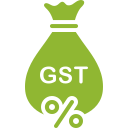What You Will Learn
1.1 Introduction
1.1.1 Meaning of Accounting
1.2 Terminologies used in Accounting
1.3 Concepts of Accounting
1.4 Double Entry System of Accounting
1.4.1 Uses of Debit and Credit
1.4.2 Rules of Debit and Credit
1.5 Golden Rules of Accounting
1.6 Recording of Business Transactions
1.6.1 Journalising Transactions
1.7 Trial Balance
1.8 Financial Statements
1.8.1 Trading Account
1.8.2 Profit & Loss Account
1.8.3 Balance Sheet
1.9 Subsidiary Books & Control Accounts
1.9.1 Cash Book
1.9.2 Petty Cash Book
1.9.3 Purchase (Journal) Book
1.9.4 Purchases Return (Journal) Book
1.9.5 Sales (Journal) Book
1.9.6 Sales Return (Journal) Book
1.9.7 Journal Proper
1.9.8 Control Accounts
1.10 Depreciation
1.10.1 Methods for Depreciation
1.10.2 Preparation of Depreciation schedule
1.11 Computerised Accounting
1.11.1 Advantages of Computerised Accounting
1.11.2 Accounting Structure for Computerised Accounting
Conclusion
Key Takeaways
Practice Exercises
2.1 Introduction
2.2 Features of TallyPrime
2.3 Downloading and Installation of TallyPrime
2.4 Types of Licenses in TallyPrime
2.5 Activate New License
2.6 Reactivate License in TallyPrime
2.7 Use License from Network in a Multiuser Environment
2.8 Working TallyPrime in Educational Mode
2.9 Company Creation and Setting up Company Features in TallyPrime
2.10 Getting Started with TallyPrime
2.10.1 Navigating from Anywhere to Anywhere in TallyPrime
2.11 F12 Configuration in TallyPrime
2.12 Alter Company Details
2.13 Shut the Company
Conclusion
Key Takeaways
Practice Exercises
3.1 Introduction
3.2 Chart of Accounts
3.3 Creation of Masters in TallyPrime
3.3.1 Accounting Masters
3.3.2 Inventory Masters
3.4 Alteration of Masters in TallyPrime
3.5 Deletion of Masters in TallyPrime
3.6 Multi-Masters Creation and Display of Chart of Accounts
3.6.1 Multi Groups Creation
3.6.2 Multi Ledgers Creation
3.6.3 Multi Stock Groups Creation
3.6.4 Multi Stock Items Creation
Conclusion
Key Takeaways
Shortcut Keys
Practice Exercises
4.1 Introduction
4.2 Recording Transactions in Tally
4.3 Recording Accounting Vouchers in TallyPrime
4.3.1 Receipt Voucher (F6)
4.3.2 Contra Voucher (F4)
4.3.3 Payment Voucher (F5)
4.3.4 Purchase Voucher (F9)
4.3.5 Sales Voucher (F8)
4.3.6 Debit Note Voucher (Alt+F5)
4.3.7 Credit Note Voucher (Alt+F6)
4.3.8 Journal Voucher (F7)
Conclusion
Key Takeaways
Shortcut Keys
Practice Exercises
5.1 Introduction
5.2 Banking Payments
5.3 Cheque Printing
5.3.1 Single Cheque Printing
5.3.2 Multi Cheque Printing
5.4 Deposit Slip
5.4.1 Cheque Deposit Slip
5.4.2 Cash Deposit Slip
5.5 Payment Advice
5.6 Bank Reconciliation
5.6.1 Manual Bank Reconciliation
5.6.2 Auto Bank Reconciliation
Conclusion
Key Takeaways
Shortcut Keys
Practice Exercises
6.1 Introduction
6.2 Final Accounts Reports in Tally
6.2.1 Trial Balance
6.2.2 Profit and Loss Account
6.2.3 Balance Sheet
6.2.4 Cash Flow & Fund Flow Analysis Report
6.2.5 Receipts and Payments
6.3 MIS Reports in Tally
6.3.1 Stock Summary Analysis
6.3.2 DayBook
6.3.3 Cash and Bank Book
6.3.4 Purchase Register
6.3.5 Sales Register
6.3.6 Journal Register
6.4 Bird’s eye view/Drill down display from anywhere to anywhere
Conclusion
Key Takeaways
Shortcut Keys
Practice Exercises
7.1 Introduction
7.2 Security Control
7.3 Activation of Security Control
7.4 Creation of Security Levels (User Roles)
7.5 Creation of Users And Passwords for Company
7.6 Accessing the company using Security Levels
7.7 Auto Login
7.8 TallyVault
Conclusion
Key Takeaways
Shortcut Keys
Practice Exercises
8.1 Introduction
8.2 Backup of Company Data
8.3 Restoring of Company Data
8.4 Company Data Repair
8.5 Migration of Tally.ERP 9 Company Data to TallyPrime
Conclusion
Key Takeaways
Shortcut Keys
Practice Exercises
9.1 Introduction
9.2 Supply Chain
9.2.1 Types of Suppliers
9.3 Inventory Management
9.3.1 Terms Used in Inventory Management
9.4 Inventory Masters in TallyPrime
9.4.1 Company Creation in TallyPrime
9.4.2 Introduction of Capital into a Business
9.4.3 Creation of Inventory Masters in TallyPrime
9.5 Tracking of Movements of Goods in Batches/Lots
9.5.1 Activation of Batches/Lots for Stock Items
9.5.2 Batch Reports
9.6 Price Levels and Price Lists
9.6.1 Activating Price Lists and Defining of Price Levels
9.6.2 Creation of Price List
9.6.3 Price Level & Price List usage in Sales Voucher
9.6.4 Revise Price List
Conclusion
Key Takeaways
Shortcut Keys
Practice Exercises
10.1 Introduction
10.2 Accounts Payable and Receivable
10.3 Maintain Bill-wise Entry
10.4 Activation of Bill-wise Entry
10.4.1 Usage of Bill-wise entry in Purchase and Payment Voucher
10.4.2 Usage of Bill-wise entry in Sales and Receipt Voucher
10.4.3 Usage of Bill-wise entry in Payment and Receipt Voucher
10.4.4 Usage of Bill-wise entry – On Account
10.5 Specifying of Credit Limit for Parties
10.5.1 Specifying Credit Limit for Individual Ledger
10.5.2 Specifying Credit Limit for Multiple Ledger
10.5.3 Sales Voucher Restriction Based on Credit Limit
10.6 Splitting of Credit Sale Into Multiple Bills
10.7 Payment Performance of Debtors
10.8 Bills Payable and Receivable Reports in TallyPrime
10.8.1 Bills Receivable
10.8.2 Ageing Analysis of Outstanding
10.8.3 Generating Reminder Letter in TallyPrime
10.8.4 Generating Confirmation of Accounts in TallyPrime
10.8.5 Bills Settlement
10.8.6 Bills Payables
Conclusion
Key Takeaways
Shortcut Keys
Practice Exercises
11.1 Introduction
11.2 Purchase Order Processing
11.2.1 Recording of Purchase Order
11.2.2 Recording of Receipt Note Voucher
11.2.3 Recording Rejections Out Voucher
11.2.4 Recording Purchase Voucher
11.2.5 Recording Debit Note Voucher
11.2.6 Recording Payment Voucher
11.3 Sales Order Processing
11.3.1 Recording of Sales Order In TallyPrime
11.3.2 Recording Delivery Note Voucher
11.3.3 Recording Rejections In Voucher
11.3.4 Recording of Sales Voucher
11.3.5 Recording Receipt Voucher
11.4 Order Outstandings
11.4.1 Sales Order Outstanding
11.4.2 Purchase Order Outstanding
11.4.3 Pre-Closure of Orders
11.5 Reorder Level
11.5.1 Display Reorder Status
11.6 Godown Transfer in TallyPrime
Conclusion
Key Takeaways
Shortcut Keys
Practice Exercises
12.1 Introduction
12.2 Configuration of Additional Cost of Purchases in TallyPrime
12.2.1 Purchase Transaction with Additional Cost Details in Voucher Mode
12.2.2 Purchase Transaction with Additional Cost Details in Item Invoice Mode
12.2.3 Debit Note Voucher with Additional Cost
Conclusion
Key Takeaways
Shortcut Keys
Practice Exercises
13.1 Introduction
13.2 Cost Centre and Cost Categories
13.2.1 Activation of Cost Centre
13.2.2 Allocation of Expenses and Incomes using Cost Centre
13.2.3 Cost Centre Classes (Automatic Allocation)
13.2.4 Allocation of Expenses to Multiple Cost Centres and Cost Categories
13.3 Cost Centre Reports
13.3.1 Category Summary
13.3.2 Cost Centre Break-up
13.3.3 Ledger Break-up
13.3.4 Group Break-up
Conclusion
Key Takeaways
Shortcut Keys
Practice Exercises
14.1 Introduction
14.2 Creation of Budget
14.3 Recording Transactions
14.4 Display Budgets and Variances Reports for Group Budget
14.5 Scenario Management
14.5.1 Creation of Scenario
14.5.2 Temporary Inclusion of Reversing Journal Voucher In the Reports.
Conclusion
Key Takeaways
Shortcut Keys
Practice Exercises
15.1 Introduction
15.2 On the Fly Reporting
15.2.1 Bird’s eye View/Drill Down Display
15.2.2 Drill Down Display
15.2.3 Date/Period Based Reporting & Comparing
15.3 Inventory Reports
15.3.1 Stock Summary
15.3.2 Godown-wise Stock Availability
15.3.3 Movement Analysis
15.3.4 Stock Query
15.4 Financial Reports
15.4.1 Balance Sheet
15.4.2 Profit & Loss A/c
15.5 Books & Registers
15.5.1 Sales Register
15.5.2 Purchase Register
15.6 Printing of Invoice and Report
Conclusion
Key Takeaways
Shortcut Keys
Practice Exercises
16.1 Introduction to GST
16.1.1 Why GST?
16.1.2 GST Tax Structure
16.1.3 Determination of Tax
16.1.4 GST Registration
16.1.5 Managing HSN CODE/SAC
16.1.6 GST Rate Structure
16.1.7 Supply of Goods and Services
16.1.8 Invoicing
16.1.9 Debit Note, Credit Note/Supplementary Invoice
16.1.10 Receipt Voucher
16.1.11 Transportation of Goods without Issue of an Invoice
16.1.12 Input Tax Credit
16.2 E-Way Bill
16.2.1 Components of E-Way Bill
16.2.2 Who must generate E-Way Bill
16.2.3 Validity of E-Way Bill
16.2.4 E-Way Bill Process Flow
16.3 GST e-Invoicing
16.3.1 Benefits of e-invoice to the businesses
16.3.2 Date of implementing GST e-invoicing
16.3.3 Entities exempted for e-invoices
16.3.4 Generating E-Way bill with e-Invoice
16.3.5 Modification of e-Invoice
16.3.6 Role of e-Invoice in GST Returns
16.3.7 Various modes of generating e-invoice
16.3.8 Role of IRP in e-Invoice
16.3.9 The practice of Generating GST e-Invoice
16.3.10 E-invoice Details
16.3.11 Invoice Reference Number (IRN)
16.4 GST in TallyPrime
16.4.1 Creation of Company and Activating GST
16.4.2 Introducing Capital into the Business
16.4.3 Creation of Masters in TallyPrime
16.5 Hierarchy of Calculating Tax in Transactions
16.5.1 Defining GST Rates at Company Level
16.5.2 Defining GST Rates at Stock Group Level
16.5.3 Defining GST Rates at Stock Item Level
16.5.4 Defining GST Rates at Accounting Group Level
16.5.5 Defining GST Rates at Ledger Level
16.5.6 Defining GST Rates at Transaction Level
16.6 Recording GST compliant transactions
16.6.1 Accounting Intrastate Supply of Goods & Services
16.6.2 Accounting Interstate Supply of Goods & Services
16.6.3 Accounting Purchase and Sales Returns of Goods with GST
16.6.4 Supplies Inclusive of Tax
16.7 E-Way Bill Report in Tally
16.7.1 Export for e-Way Bill Report
16.7.2 Exporting Bulk or Consolidated e-Way Bill invoices
16.7.3 Update e-Way Bill Information
16.8 Input Tax Credit Set Off against Liability
16.9 GST Tax Payment
16.9.1 Timeline for payment of GST tax
16.9.2 Modes of Payment
16.9.3 Challan Reconciliation
16.10 Generating GST Returns for Regular Dealer in Tally
16.10.1 GSTR-1
16.10.2 GSTR-3B
16.10.3 GSTR-9 – GST Annual Computation
16.11 Filing GST Returns in Tally
16.11.1 Filing GSTR-1 Returns
16.11.2 Filing GSTR-3B Returns
16.11.3 Filing GSTR-9 Returns – GST Annual Computation
16.12 Generating e-Invoice in TallyPrime
16.12.1 Recording Outward Supply and Generating e-Invoice without e-Way Bill
16.12.2 Recording Outward Supply and Generating e-Invoice with e-Way Bill
16.12.3 E-Invoice Report
16.13 Quarterly Return Monthly Payment Scheme
16.13.1 Creation of Company and Activating GST in TallyPrime
16.13.2 Accounting Intrastate Supply of Goods & Services
16.13.3 Input Tax Credit Set Off against Liability and Tax Payment
16.13.4 Invoice Furnishing Facility (IFF) in QRMP scheme
16.14 Composition Dealer under GST Regime
16.14.1 Introduction
16.14.2 Conditions to be satisfied under the scheme
16.14.3 Creation of Company and Activating GST in TallyPrime
16.14.4 Accounting Intrastate and Interstate Supply of Goods
16.14.5 Generating GST Returns for Composition Dealer in Tally
16.14.6 GST Tax Payment
Conclusion
Key Takeaways
Shortcut Keys
Practice Exercises
17.1 Introduction to TDS
17.2 Basic Concepts of TDS
17.3 TDS Process
17.4 TDS in TallyPrime
17.4.1 Activation of TDS in TallyPrime
17.5 TDS Statutory Masters
17.6 Configuration of TDS at Different levels
17.6.1 Configuration of TDS at Group level
17.6.2 Configuration of TDS at Ledger level
17.7 Recording TDS Compliant Transactions in TallyPrime
17.7.1 Expenses Partly Subject to TDS
17.7.2 Booking Expenses and TDS deduction on crossing Exemption Limit
17.7.3 Accounting Multiple Expenses and Deducting TDS later
17.7.4 TDS on Expenses at Lower and Zero Rate
17.7.5 TDS on Expenses at Higher Rate
17.7.6 Recording Transaction when TDS Exemption limit is not crossed
17.8 TDS Exceptions
17.9 TDS Payment to Department
17.9.1 Resolving Uncertain Transactions
17.9.2 TDS Outstanding
17.9.3 Payment of Tax to the Income Tax Department
17.9.4 Generating TDS Challan (ITNS 281)
17.9.5 Interest Payment to Income Tax Department on Delayed Tax Payment
17.10 TDS Report
17.10.1 Challan Reconciliation
17.10.2 Form 26Q
17.10.3 E-Return
17.11 Changes in TDS rates from 1st April 2021
Conclusion
Key Takeaways
Shortcut Keys
Practice Exercises
18.1 Introduction
18.2 Exporting of data in available formats
18.3 Export and Import of Data
18.3.1 Export and Import of Masters from one company to another in XML format
18.3.2 Export and Import of Transactions from one company to another in XML format
18.3.3 Exporting Reports to MS Excel
18.3.4 Exporting Reports to PDF
18.4 Open Database Connectivity (ODBC)
18.5 Printing of Company Logo on Vouchers, Invoices & Reports.
Conclusion
Shortcut Keys
Key Takeaways
Practice Exercises
19.1 Introduction
19.2 Changing Current Period and continue voucher entry in the same company data
19.3 Company data handling through Export and Import of data
19.4 Split Company Data
19.5 Create a new company and maintain books of accounts for the new financial year
19.6 Creating Group Company Data
19.7 Comparative Final Accounts Reports of Two Companies
Conclusion
Shortcut Keys
Practice Exercises
1.1 Introduction
1.2 Creation of Company and Introducing Capital into the Business
1.2.1 Introducing Capital into the Business
1.2.2 Creation of Masters in TallyPrime
1.3 Creation of Foreign Currencies
1.4 Altering Currencies and Defining of Rates of Exchange
1.5 Recording Accounting Vouchers using Foreign Currency (On Realization Basis)
1.5.1 Recording Purchase Vouchers using Foreign Currency (On Realization Basis)
1.5.2 Recording Sales Vouchers using Foreign Currency (On Realization Basis)
1.6 Adjusting Forex Gain/Loss (On Realization Basis)
1.7 Recording Accounting Vouchers using Foreign Currency (On Un-Realized Basis)
1.8 Generating Reports with Multi Currencies
Conclusion
Key Takeaways
Shortcut Keys
Practice Exercises
2.1 Introduction
2.2 Activating Interest Calculation for the Company
2.3 Accounting of Simple Interest
2.3.1 Accounting of Simple Interest Amount in the Books of Accounts
2.3.2 Recording Payment voucher with Interest Amount to the Supplier
2.4 Accounting of Compound Interest
2.4.1 Accounting of Simple Interest Amount in the Books of Accounts
2.4.2 Accounting of Compound Interest Amount in the Books of Accounts
2.4.3 Recording Receipt voucher with Interest Amount from the Customer
2.5 Accounting of Interest on Outstanding Balances
2.6 Interest Calculation Reports
Conclusion
Key Takeaways
Shortcut Keys
Practice Exercises
3.1 Introduction
3.2 Enabling Job Order Processing in TallyPrime
3.3 Job Work Out Order Processing
3.3.1 Voucher Type Set Up
3.3.2 Auto Listing of Components Using Bill of Materials
3.3.3 Recording of Job Work Out Order Voucher
3.3.4 Recording of Material Out Voucher
3.3.5 Recording of Material In Voucher
3.3.6 Booking of Job Work Charges (Expenses)
3.3.7 Accounting of Payment to Job Worker against Purchase Consideration
3.3.8 Job Work Out Reports
3.3.9 Cost Estimation
3.4 Job Work In Order Processing
3.4.1 Voucher Type Set Up
3.4.2 Auto Listing of Components Using Bill of Materials
3.4.3 Recording of Job Work In Order Voucher
3.4.4 Recording of Material In (Raw Materials) Voucher
3.4.5 Recording of Stock Journal Voucher for Manufacturing Finished Goods (Manufacturing Process)
3.4.6 Recording of Material Out (Finished Goods) Voucher
3.4.7 Recording of Material Out (Scrap) Voucher
3.4.8 Booking of Job Work Charges (Income)
3.4.9 Accounting of Receipt from the Principal Manufacturer towards Job Work Rendered
3.4.10 Job Work In Reports
3.5 Transfer of Materials (Inter-Godown)
3.5.1 Stock Transfer Journal Register
3.5.2 Transfer Analysis
Conclusion
Key Takeaways
Shortcut Keys
Practice Exercises
4.1 Introduction
4.2 Features of Job Costing
4.3 Types of Business that use Job Costing
4.4 Documents used in Job Costing Process
4.5 Enabling Job Costing in TallyPrime
4.6 Creation of Chart of Accounts for Job Costing Process
4.6.1 Creation of Cost Centres as Project/Job
4.6.2 Creation of Godown for Project/Job Location
4.6.3 Creation of Stock Groups and Stock Items
4.6.4 Creation of Accounting Masters
4.6.5 Creation of Voucher Type and Voucher Class under Stock Journal
4.7 Recording Job Costing Related Transactions
4.7.1 Accounting Purchase of Raw Materials
4.7.2 Accounting Payment for Transportation Charges Incurred on Purchase of Raw Materials
4.7.3 Accounting Manufacturing Journal for Conversion of Raw Materials to Finished Goods
4.7.4 Accounting Payment for Expenses Incurred during the Manufacturing Process
4.7.5 Accounting Stock Journal for Inter-Godown Stock transfer
4.7.6 Accounting Sale of Finished Goods to the Customer
4.7.7 Accounting Receipt from the Customer
4.8 Job Costing Reports
4.8.1 Job Work Analysis Report
4.8.2 Material Consumption Summary Report
Conclusion
Key Takeaways
Shortcut Keys
Practice Exercises
5.1 Introduction
5.2 Cheque Management
5.2.1 Configuring Cheque Books
5.2.2 Cheque Register
5.3 Post-Dated Cheque Management
5.3.1 Features of Post-Dated Cheque Management in TallyPrime
5.3.2 Advantages of Maintaining Post-Dated Cheque Management in TallyPrime
5.3.3 Recording & Maintaining Post-Dated Cheque in TallyPrime
5.3.4 Post-dated Summary Report
5.3.5 Regularizing Post-dated Vouchers
5.3.6 Accounting PDC transaction for Notional Bank
5.4 Handling e-Payments in TallyPrime
5.4.1 One-Time Configuration for e-Payments Feature
5.4.2 Modes of e-Payments
5.4.3 Activation of e-Payments Feature in TallyPrime
5.4.4 Recording e-Payment Transactions
5.4.5 Viewing of e-Payments Report
5.4.6 Export and Uploading Payment Instructions to the Bank Portal
Conclusion
Key Takeaways
Shortcut Keys
Practice Exercises
6.1 Introduction
6.2 Overview of Tally.NET Features
6.3 Remote Access in TallyPrime
6.3.1 Features of Remote Access
6.3.2 Connect Company to Tally.NET Services
6.3.3 Creation of Tally.NET users for Remote Access
6.3.4 Modify Security Levels for Tally.NET User.
6.3.5 Login to the company in TallyPrime from Anywhere
6.3.6 Connectivity Status report in TallyPrime
6.3.7 Logout from Remote Session
6.3.8 Disconnect the Company in Server
6.3.9 Disable Remote Access for the Company
6.4 TallyPrime Reports in Browsers (TRiB)
6.4.1 Features of TallyPrime Reports in Browsers
6.4.2 Getting Started with TallyPrime Reports in Browser
6.4.3 Creation of Tally.NET ID for the User
6.4.4 Create Tally.NET IDs from the Tally Portal
6.4.5 View TallyPrime reports from anywhere using the browser on Desktop/Mobile/Tab.
6.4.6 Connectivity Status report in TallyPrime
6.4.7 Disconnect the Company in Server
6.5 Data Synchronisation in TallyPrime
6.5.1 Features of Data Synchronisation in TallyPrime
6.5.2 Modes of Synchronisation in TallyPrime
6.5.3 Initializing of Synchronisation in TallyPrime
6.5.4 Specifying the Role of the Company
6.5.5 Connect Server Company to Tally.NET Server for Synchronisation
6.5.6 Defining Client Rules and Activate Server Rules for Synchronisation
6.5.7 Synchronising the Data
6.5.8 Synchronisation Reports
6.5.9 Snapshot Exchange in TallyPrime
6.6 Tally Virtual User (TVU)
6.6.1 Technology options to Run Tally Virtually
6.6.2 Tips to Configure Tally for Virtual Usage
6.6.3 Virtual Use of TallyPrime
6.6.4 How to Avail Additional TVU Packs for Free Trial
Conclusion
Key Takeaways
Shortcut Keys
Practice Exercises
7.1 Introduction
7.7.1 E-Way Bill
7.7.2 GST e-Invoicing
7.7.3 GST in TallyPrime
7.7.4 Creation of Company and Activating GST
7.7.5 Introducing Capital into the Business
7.7.6 Creation of Masters in TallyPrime
7.2 Recording GST compliant transactions
7.3 Accounting Intrastate Supply of Goods & Services
7.3.1 Intrastate Inward Supply of Goods
7.3.2 Intrastate Outward Supply of Goods and Generating e-Invoice
7.3.3 Intrastate Inward Supply of Services
7.3.4 Intrastate Outward Supply of Services
7.4 Accounting Interstate Supply of Goods
7.4.1 Interstate Inward Supply of Goods
7.4.2 Interstate Outward Supply of Goods and Generating e-Invoice with e-Way Bill
7.5 Purchases from Unregistered Dealer
7.6 Purchases from Composition Dealer
7.7 Accounting Mixed Supply under GST
7.8 Accounting Composite Supply under GST
7.9 Supply of Exempted/Nil-rated Goods under GST
7.10 Supply of Goods to Special Economic Zone (SEZ)
7.11 Supply of Goods to Other Territory
7.12 Supply of Goods to Unregistered Dealer
7.13 Reverse Charge Mechanism under GST
7.13.1 Import of Goods subject to Reverse Charge
7.13.2 Import of Services subject to Reverse Charge
7.13.3 Reverse Charge on Outward Supply of Services
7.13.4 Reverse Charge on Inward Supply of Services
7.14 Export of Goods under GST
7.14.1 Exports through LUT/Bond
7.14.2 Exports Taxable
7.15 Advance Receipts under GST
7.15.1 Advance Receipt for supply completed in the same month
7.15.2 Advance Receipt for supply completed in the subsequent month
7.16 Generating E-Invoice Report
7.16.1 Export Bulk Invoices using Online Method.
7.16.2 Export Bulk Invoices using Offline Method.
7.16.3 Update Details in TallyPrime and Print QR Code
7.16.4 Rectify Missing/Invalid Information and Update the Details from e-Invoice report.
7.16.5 Cancel IRN
7.17 Generating E-Way Bill Report
7.17.1 Generate e-Way Bill in Bulk
7.17.2 Update e-Way Bill Part B
7.17.3 Extend e-Way Bill Validity
7.17.4 Export Bulk Invoices using Offline Method.
7.18 Input Tax Credit Set Off against Liability
7.19 GST Tax Payment
7.19.1 Challan Reconciliation
7.20 Reversal of Input Tax Credit
7.20.1 Exempt and non-business supplies – Rule 42(1)(m)
7.20.2 Ineligible credit
7.20.3 Non-payment to the Supplier – Rule 37(2)
7.21 Generating GST Returns in Tally
7.21.1 GSTR-1
7.21.2 GSTR-3B
7.21.3 GSTR-2
7.21.4 GSTR-9 – GST Annual Computation
7.22 E-Filing GST Returns in Tally
7.22.1 Filing GSTR-1 Returns
7.22.2 Filing GSTR-3B Returns
7.22.3 Reconciling GSTR-2 Returns
7.22.4 Filing GSTR-9 Returns – GST Annual Computation
Conclusion
Key Takeaways
Shortcut Keys
Practice Exercises
8.1 Introduction
8.2 Activation of TDS in TallyPrime
8.3 Recording TDS Compliant Transactions
8.3.1 Booking of Expenses & deducting TDS in the Journal Voucher
8.3.2 TDS Transaction for Purchase of Software
8.3.3 TDS on Sales Commission and Deducting TDS
8.3.4 Accounting TDS on Capital Expenditure
8.3.5 Accounting for TDS on Advance Payments and Adjusting Advances towards Bill
8.3.6 Purchase Escalation after Recording TDS Transaction
8.3.7 Reversal/Cancellation of Expenses with TDS
8.3.8 TDS on Works Contract attracting GST
8.3.9 TDS on Payments to Non-Residents (DTAA)
8.3.10 TDS on Income from Foreign Currency, Bonds or Shares of India Company
8.3.11 Accounting Direct Payment and deducting TDS
8.3.12 Accounting Multiple Expenses and Deducting TDS later
8.3.13 TDS on Reimbursement of Expenses (Pure Agent)
8.4 TDS Payment to Department
8.4.1 TDS Outstanding
8.4.2 Payment of Tax to the Income Tax Department
8.4.3 Generating TDS Challan (ITNS 281)
8.4.4 Interest Payment to Income Tax Department on Delayed Tax Payment
8.5 TDS Report
8.5.1 Challan Reconciliation
8.5.2 Form 26Q
8.5.3 Form 27Q
8.6 E-Return
8.6.1 Form 26Q
8.6.2 Form 27Q
8.6.3 TRACES Portal
8.7 Maintaining Books of Accounts as a Deductee
Conclusion
Key Takeaways
Shortcut Keys
Practice Exercises
9.1 Introduction
9.2 Basic Concepts of TCS
9.3 TCS in TallyPrime
9.3.1 Activation of TCS in TallyPrime
9.4 Recording TCS Compliant Transactions
9.4.1 Sale of TCS Goods on Accrual Basis
9.4.2 Sale of TCS Goods at Lower Rate/Nil Rate
9.4.3 Sale of TCS Goods at Higher Tax Rate (Under Section 206CCA)
9.4.4 Accounting TCS Exemption for Buyers Deducting TDS
9.4.5 TCS on Transfer of Right to Use
9.4.6 Accounting for TCS on Advance Receipts and Adjusting Advances towards Bill
9.5 TCS Payment to Department
9.5.1 Resolving Uncertain Transactions
9.5.2 Payment of Tax to the Income Tax Department
9.5.3 Generating TCS Challan (ITNS 281)
9.5.4 Interest Payment to Income Tax Department on Delayed Tax Payment
9.6 TCS Reports
9.6.1 Form 27EQ
9.6.2 Challan Reconciliation
9.7 E-Return
9.8 Maintaining Books of Accounts as a Collectee
Conclusion
Key Takeaways
Shortcut Keys
Practice Exercises
10.1 Introduction
10.2 Payroll in TallyPrime
10.2.1 Creation of Company and Activating Payroll
10.2.2 Introducing Capital into the Business
10.3 Creation of Payroll Masters in TallyPrime
10.3.1 Employee Masters
10.3.1.1 Employee Categories
10.3.1.2 Employee Group Master
10.3.1.3 Employee Master
10.3.2 Creation of Units (Work)
10.3.3 Attendance /Production Types
10.3.3.1 Attendance Type Creation
10.3.3.2 Employees Paid Leaves
10.3.4 Pay Heads in TallyPrime
10.3.4.1 Understanding on Pay Head Types of TallyPrime
10.3.4.2 Understanding on Pay Head Calculation types in TallyPrime
10.3.4.3 Understanding on Methods of Computation
10.3.5 Creation of Primary Pay heads
10.3.5.1 Basic Pay
10.3.5.2 House Rent Allowance
10.3.5.3 Conveyance
10.3.5.4 Overtime
10.3.5.5 Canteen Deduction
10.3.6 Creation of Statutory Pay heads
10.3.6.1 Provident Fund
10.3.6.2 Creation of Employer’s Other Charges Pay heads for Provident Fund
10.3.6.3 Employees State Insurance
10.3.6.4 Professional Tax
10.3.6.5 Gratuity
10.3.6.6 Income Tax
10.3.7 Defining Salary Details
10.3.7.1 Defining Salary Details for an Employee
10.3.7.2 Defining Salary Details for an Employee Group
10.3.7.3 Cascading Salary Details from Employee Group to Employee Master
10.3.8 Income Tax Master Configuration
10.3.8.1 Income Tax Pay Head Details
10.3.8.2 Income Tax Declarations
10.3.8.3 Income Tax Exempt
10.3.8.4 Income Tax Amount
10.3.8.5 Payroll Income Tax Configuration
10.3.8.6 Previous Employer Tax Deducted/Paid Details
10.4 Processing Payroll with Income Tax
10.4.1 Attendance Vouchers
10.4.2 Payroll Vouchers
10.4.3 Payment Vouchers
10.5 Payroll Reports
10.5.1 Pay Slip
10.5.2 Pay Sheet
10.5.3 Attendance Sheet
10.5.4 Payment Advice
10.5.5 Payroll Statement
10.5.6 Employee Pay Head Breakup
10.5.7 Pay Head Employee Breakup
10.5.8 Payroll Register
10.5.9 Attendance Register
10.5.10 Employee Profile
10.5.11 Employee Head Count
10.5.12 Expat Reports
10.6 Payroll Statutory Reports
10.6.1 Summary
10.6.2 Provident Fund
10.6.3 Employee State Insurance
10.6.4 Professional Tax
10.6.5 Gratuity
10.6.6 Income Tax Reports
10.6.7 Challan Reconciliation (Income Tax Payment)
10.6.8 Income Tax Returns
10.6.9 Income Tax E-Return
10.6.10 Exceptions Reports
Conclusion
Key Takeaways
Shortcut Keys
Practice Exercises
Chapter 1: Improving Conversational English
1.1 Introduction
1.2 The Golden Rules of Communication
1.2.1 Listen
1.2.2 Talk and Practice
1.2.3 Read
1.2.4 Google Translator
1.2.5 Improve your Vocabulary
1.2.6 Try Learning a New Word Every Day
1.2.7 Watch Movies
1.2.8 Make Friends
1.2.9 Participate in Debates
1.2.10 Be Ready for Small Talk
1.2.11 Do not be Afraid to Make Mistakes
Key Takeaways
Chapter 2: Situational English
2.1 Introduction
2.2 Telephone
2.2.1 Speaking on the Phone
2.2.2 Making Calls
2.2.3 Vocabulary
2.2.4 Phrases
2.2.5 Making a Telephone Call – Practice Conversation
Practice Exercises
2.3 Restaurant
2.3.1 Vocabulary
2.3.2 Entertaining a Business Client at a Restaurant Practice Conversation
Practice Exercises
2.4 Railway
2.4.1 Vocabulary
2.4.2 At the Railway Station – Practice Conversation
2.5 Flights
2.5.1 Vocabulary
2.5.2 Booking a Flight – Practice Conversation
2.5.3 At the Check-in Counter – Practice Conversation
Practice Exercises
2.6 Hotel
2.6.1 Vocabulary
2.6.2 Checking In – Practice Conversation
Practice Exercises
2.7 Deals
2.7.1 Vocabulary
2.7.2 Negotiating a Deal – Practice Conversation
2.8 Office
2.8.1 Vocabulary
Practice Exercises
2.8.2 At the Office – Practice Conversation
Practice Exercises
2.9 Party
2.9.1 Vocabulary
2.9.2 At the Party – Practice Conversation
Practice Exercises
2.10 Appointment
2.10.1 Vocabulary
2.10.2 Making an Appointment – Practice Conversation
Practice Exercises
2.11 Interview
2.11.1 Vocabulary
2.11.2 Attending an Interview – Practice Conversation
Practice Exercises
2.12 Bank
2.12.1 Vocabulary
2.12.2 At the Bank – Practice Conversation
Practice Exercises
2.13 Dealing with Customers
2.13.1 Vocabulary
2.13.2 Dealing with Customers – Practice Conversations
Key Takeaways
Practice Exercises
Chapter 3: Reading Exercises
3.1 Introduction
3.2 Reading Comprehensive – 1
Practice Exercises
3.3 Reading Comprehensive – 2
Key Takeaways
Practice Exercises
Chapter 4: Business Idioms
4.1 Introduction
4.2 Business Idioms
Key Takeaways
Practice Exercises
Chapter 5: Business English Vocabulary
5.1 Introduction
5.2 Terms
5.3 Abbreviations
Key Takeaways
Practice Exercises
Chapter 6: Easily Confused Words in English
6.1 Introduction
6.2 Some Easily Confused Words
Key Takeaways
Practice Exercises
Chapter 7: The Parts of Speech
7.1 Introduction
7.2 Types
7.2.1 Assertive Sentence
7.2.2 Interrogative Sentence
7.2.3 Imperative Sentence
7.2.4 Exclamatory Sentence
7.3 Subject and Predicate
7.3.1 Subject
7.3.2 Predicate
7.4 Phrase and Clause
7.4.1 Phrase
7.4.2 Clause
7.5 Parts of Speech
7.5.1 Nouns
7.5.2 Pronouns
7.5.3 Adjectives
7.5.4 Verbs
7.5.5 Adverbs
7.5.6 Prepositions
7.5.7 Conjunctions
7.5.8 Interjections
Key Takeaways
Practice Exercises
Chapter 8: Determiners
8.1 Introduction
8.2 Articles
8.2.1 Exceptions to using the Definite Article
8.3 Demonstratives
8.4 Possessives
8.5 Quantifier
Key Takeaways
Practice Exercises
Chapter 9: Tenses
9.1 Introduction
9.2 Types of Verb Tenses
9.2.1 Verb Tense: Aspect
9.2.2 Verb Tense: Time
Key Takeaways
Practice Exercises
Chapter 10: Auxiliary Verbs
10.1 Introduction
10.2 Modal Auxiliaries
10.3 The ‘To Be’ Verb
10.4 Phrasal Verbs
Key Takeaways
Practice Exercises
Chapter 11: Plurals, Opposite, Comparatives and Superlatives
11.1 Introduction
11.2 How to form the Plural
11.3 Commonly Used Opposites
11.4 Comparative and Superlative Degrees
Key Takeaways
Practice Exercises
Chapter 12: Subject Verb Agreement
12.1 Introduction
12.2 Guidelines to Subject Verb Agreement
Key Takeaways
Practice Exercises
Chapter 13: Question Words and Question Tags
13.1 Introduction
13.2 Who
13.3 When
13.4 Why
13.5 What
13.5.1 What…For
13.5.2 What…Like
13.6 Where
13.7 Which
13.8 How
13.9 Whose
13.10 Question Tags
13.10.1 How to Form Question Tags
Key Takeaways
Practice Exercises
Chapter 14: Direct and Indirect Speech, Active and Passive Voice
14.1 Direct and Indirect Speech
14.1.1 Reporting Verb
14.1.2 Reported Speech
14.1.3 Rules of Indirect Speech
14.1.4 Tense Changes
14.1.5 Change in Time
14.1.6 Question Forms and Indirect Speech
14.1.7 Yes/No Questions
14.1.8 Question Words
14.1.9 Imperative Sentences
14.1.10 Exclamatory Sentences
14.2 Active and Passive Voice
14.2.1 Active to Passive
14.2.2 Passive to Active
Key Takeaways
Practice Exercises
Chapter 15: Punctuation
15.1 Introduction
15.2 End of Sentence Punctuation
15.2.1 Full Stop
15.2.2 Question Mark
15.2.3 Exclamation Mark
15.3 Mid-Sentence Punctuation
15.3.1 Comma
15.3.2 Colon
15.3.3 Semicolon
15.3.4 Apostrophe
15.3.5 Quotation Marks
15.3.6 Dash
15.3.7 Hyphen
15.4 Other Punctuation Marks
15.4.1 Parentheses
15.4.2 Ellipsis
15.4.3 Slash
Key Takeaways
Practice Exercises
1.1 Introduction
1.2 VAT in GCC Countries
1.2.1 VAT System
1.2.2 Why VAT?
1.3 VAT Registration
1.3.1 Who should mandatorily register under VAT?
1.3.2 Who can voluntarily register under VAT?
1.3.3 Who is exempted from registering under VAT?
1.3.4 VAT Registration Due Date in UAE
1.4 VAT Rates
1.4.1 Important Terms/Terminology under VAT in UAE
1.5 Understanding of Different Types of VAT Supplies
1.6 GCC VAT Computation
1.6.1 Invoicing
1.7 VAT in TallyPrime
1.7.1 Creation of Company and Activating VAT
1.7.1.1 Company Creation in TallyPrime
1.7.2 Introducing Capital into the Business
1.7.3 Creation of Masters in TallyPrime
1.7.3.1 Creation of Accounting Masters
1.7.3.2 Creation of Inventory Masters
1.7.3.3 Displaying Chart of Accounts
1.7.4 Hierarchy of Calculating Tax in Transactions
1.8 Recording Basic VAT Transactions
1.8.1 Accounting of Domestic Taxable Transactions at Standard Rate
1.8.1.1 Purchase of Taxable Goods
1.8.1.2 Sale of Taxable Goods
1.8.2 Accounting of Intra GCC Transactions
1.8.2.1 Intra GCC Supply – Export within GCC Countries
1.8.2.2 Intra GCC Purchase – Reverse Charge Mechanism
1.8.3 Accounting of Purchase Returns & Sales Returns
1.8.4 Accounting of Advance Receipts Under GCC-VAT
1.8.5 Accounting of Exempted Supply
1.8.6 Accounting of Zero Rated Supply
1.8.7 Inclusive of Tax
1.8.8 Recording Sales Invoice against Advance Received in the Last Return Period
1.8.9 Accounting of Service Transactions
1.8.10 Purchase from an Unregistered Dealer
1.8.11 Sales with Additional Ledgers (Expenses)
1.8.12 Override Tax Details in an Invoice
1.8.13 Round-off of Sales Invoice Value
1.9 Recording Advanced VAT Transactions
1.9.1 Imports from Outside GCC Countries
1.9.1.1 VAT paid at Customs
1.9.1.2 VAT not paid at Customs
1.9.2 Export to Outside GCC Countries
1.9.3 Supply on Profit Margin under GCC VAT
1.9.4 Import for Subsequent Sales (GCC Transfer)
1.9.5 Subsequent Sales to Intra GCC Countries
1.9.6 Transfer of Right to Use
1.9.7 Accounting of Purchase of Capital Goods
1.9.7.1 Purchase of Capital Goods and claim Input Credit fully in the same voucher
1.9.7.2 Purchase of Capital Goods and claim Input Credit Partially in the same voucher
1.9.7.3 Purchase of Capital Goods without claiming ITC
1.9.7.4 Reversal of Input Tax under GCC VAT
1.10 Printing of VAT Invoice
1.10.1 Accounting of POS with VAT and Printing Invoice in Bilingual
1.10.2 Accounting of POS to Overseas Tourist with VAT
1.11 Payment of VAT to Tax Authority
1.11.1 Tax Payment Reconciliation of GCC VAT
1.11.2 VAT Payment using GIBAN
1.12 VAT Reports Analysis
1.12.1 VAT 201
1.12.2 Advance Receipt Report
1.12.3 Reverse Charge Report
1.12.4 VAT Paid to Customs Report
1.12.5 Return Transaction Book
1.12.6 Tax Payment Reconciliation
1.12.7 Tax Rate Setup
1.12.8 Update Party TRN
1.12.9 Import Party TRN
1.13 Filing of Return
1.14 Federal Tax Authority (FTA) Audit File
1.15 Corporate Tax in UAE
1.15.1 What is a Corporate Tax?
1.15.2 Who should Register and Pay Corporate Tax in UAE?
1.15.3 Who is exempt from Corporate Tax?
1.15.4 What is the Corporate Tax Rate?
1.15.5 What is Withholding Tax rate?
1.15.6 How is the corporate tax in UAE calculated?
1.15.7 How to calculate Taxable Income of a Tax Group?
1.15.8 Filing and Corporate Tax Payment
Conclusion
Key Takeaways
Shortcut Keys
Practice Exercises
1.1 Assignment: Amend Invoices
1.1.1 Dec GSTR1
1.2 Assignment: Assignment 1
1.2.1 Basic Concepts
1.2.2 Registration
1.2.3 Oct GSTR1 Online
1.2.4 Oct GSTR1 Offline
1.2.5 Oct GSTR2A2B
1.2.6 Oct Pay Tax
1.2.7 Nov GSTR1 Online
1.2.8 Nov GSTR1 Offline
1.2.9 Nov GSTR2A2B
1.2.10 Nov Pay Tax
1.2.11 Dec GSTR1 Online
1.2.12 Dec GSTR1 Offline
1.2.13 Dec GSTR2A2B
1.2.14 Dec GSTR3B Online
1.2.15 Dec GSTR3B Offline
1.3 Assignment: E-invoice
1.3.1 Registration
1.3.2 Offline
1.3.3 Cancel
1.4 Assignment: E-way Bill
1.4.1 Registration
1.4.2 Online
1.4.3 Offline
1.4.4 Cancel
1.5 Assignment: GST Excess Purchase
1.5.1 Registration
1.5.2 Nov GSTR1 Online + Offline
1.5.3 Nov GSTR2A2B + Payment
1.6 Assignment: GST Nil Return
1.6.1 Oct GSTR1 Online
2.1 Assignment 1
2.1.1 Registration
2.1.2 GSTR-1 online October
2.1.3 GSTR-1 offline October
2.1.4 View GSTR2A-2B October
2.1.5 Pay tax October
2.1.6 GSTR-1 online November
2.1.7 GSTR-1 offline November
2.1.8 View GSTR2A-2B November
2.1.9 Pay tax November
2.1.10 GSTR-1 online December
2.1.11 GSTR-1 offline December
2.1.12 View GSTR2A-2B December
2.1.13 GSTR-3B online December
2.1.14 GSTR-3B offline December
2.2 Assignment 2
2.2.1 GST Nil Return
2.2.1.1 Registration
2.2.1.2 GSTR-1 Online October
2.2.2 GST Excess Purchase
2.2.2.1 Registration
2.2.2.2 GSTR-1 online November
2.2.2.3 GSTR-1 offline November
2.2.2.4 View GSTR2A-2B November
2.2.3 Amend Invoices
2.2.3.1 GSTR-1 online December
2.2.4 E-way Bill
2.2.4.1 E-way Bill Registration
2.2.4.2 E-way Bill Online
2.2.4.3 E-way Bill Offline
2.2.4.4 E-way Bill Cancel
2.2.5 E-Invoice
2.2.5.1 E-Invoice Registration
2.2.5.2 E-Invoice Offline
2.2.5.3 E-invoice Cancel
1.1 Introduction
1.2 Components of Computer – Hardware & Software
1.2.1 Hardware
1.2.2 Software
1.3 Introduction to Windows 11
1.4 Desktop and its Properties
1.4.1 Mouse Properties & Region Option
Conclusion
Shortcut Keys
Key Takeaways
Practice Exercises
2.1 Introduction
2.2 Files and Folder Management
2.3 Wild Cards Concept in Windows 11
2.4 Recycle Bin
2.5 Notepad
Conclusion
Key Takeaways
Practice Exercises
3.1 Introduction
3.1.1 Creating and Setup of New Documents
3.2 Paragraph Formatting
3.3 Working with Insert Tab
3.4 Different Functions in Word
Conclusion
Key Takeaways
Practice Exercises
4.1 Introduction
4.1.1 Overview of the Worksheet
4.2 Inserting and Basic Formatting of Data
4.3 Working with Cell Referencing
4.4 Number and Conditional Formatting
4.5 Working with Formulas
4.6 Logical Functions
4.7 Basics of Financial Function
4.8 Working with Lookup Function
4.9 Goal Seek
4.10 Working with Charts and Pivot Table
4.11 Different Functions in MS Excel
Conclusion
Key Takeaways
Practice Exercises
5.1 Getting Started with PowerPoint
5.1.1 How to Open PowerPoint
5.2 Creation & Finalization of Presentation
5.2.1 Creating Presentation Using Templates
Conclusion
Key Takeaways
Practice Exercises
1.1 Introduction
1.2 Communication Skills
1.3 Listening – An Important Skill to Succeed at Workplace
1.3.1 How to Improve Listening Skill
1.3.2 Barriers to Listening
1.4 Assertiveness
1.4.1 Is Assertiveness Aggressive?
1.4.2 Developing Assertiveness
1.5 Managerial Effectiveness
1.5.1 Maintaining Professional Conduct
Practice Exercises
Points to Remember
2.1 Introduction
2.2 What is Perceived as a Problem?
2.3 Type of Problems
2.4 Decision Making
2.4.1 What is Decision Making?
2.4.2 The Decision-Making Process
2.4.3 Successful Decision Makers
Practice Exercises
Points to Remember
3.1 Introduction
3.2 What is a Group Dynamics?
3.2.1 What Causes Poor Group Dynamics?
3.3 Team Building
3.4 Group Problem Solving
3.5 Strategies to Manage Group Dynamics
Practice Exercises
Points to Remember
4.1 Introduction
4.2 Causes of Conflict
4.3 Types of Conflict
4.3.1 Minimise and Resolve Conflict in the Workplace
4.4 Functions of Conflict
4.5 What is Negotiation?
4.5.1 Stages of Negotiation
4.5.2 Negotiation Styles
4.6 Personal Traits to Remember while Negotiating
Practice Exercises
Points to Remember
5.1 Introduction
5.2 Leadership Styles
5.3 Qualities of A Good Leader
5.4 Leaders vs Managers
Practice Exercises
Points to Remember
6.1 Introduction
6.2 Personal time management skills include
6.3 Importance of Time Management
6.4 Effective Time Management
6.4.1 Urgent vs. Important Tasks
Practice Exercises
Points to Remember
7.1 Introduction
7.2 Attributes of Emotional Intelligence
7.3 Importance of Emotional Intelligence
7.4 Effects of Emotional Intelligence
7.5 Developing Emotional Intelligence
Practice Exercises
Points to Remember
8.1 Introduction
8.2 Types of Stress
8.2.1 Acute Stress
8.2.2 Chronic Stress
8.3 Causes of Stress
8.3.1 Symptoms of Stress
8.4 How to manage Stress?
Practice Exercises
Points to Remember
- Accounts Executive (Accounts Payable & Receivable
- Accounts Executive (Payroll)
- Accounts Executive (Recording & Reporting)
- GST Accounts Assistant






 Faculty:
Tally Certified Trainer (TCT)
Faculty:
Tally Certified Trainer (TCT)
















